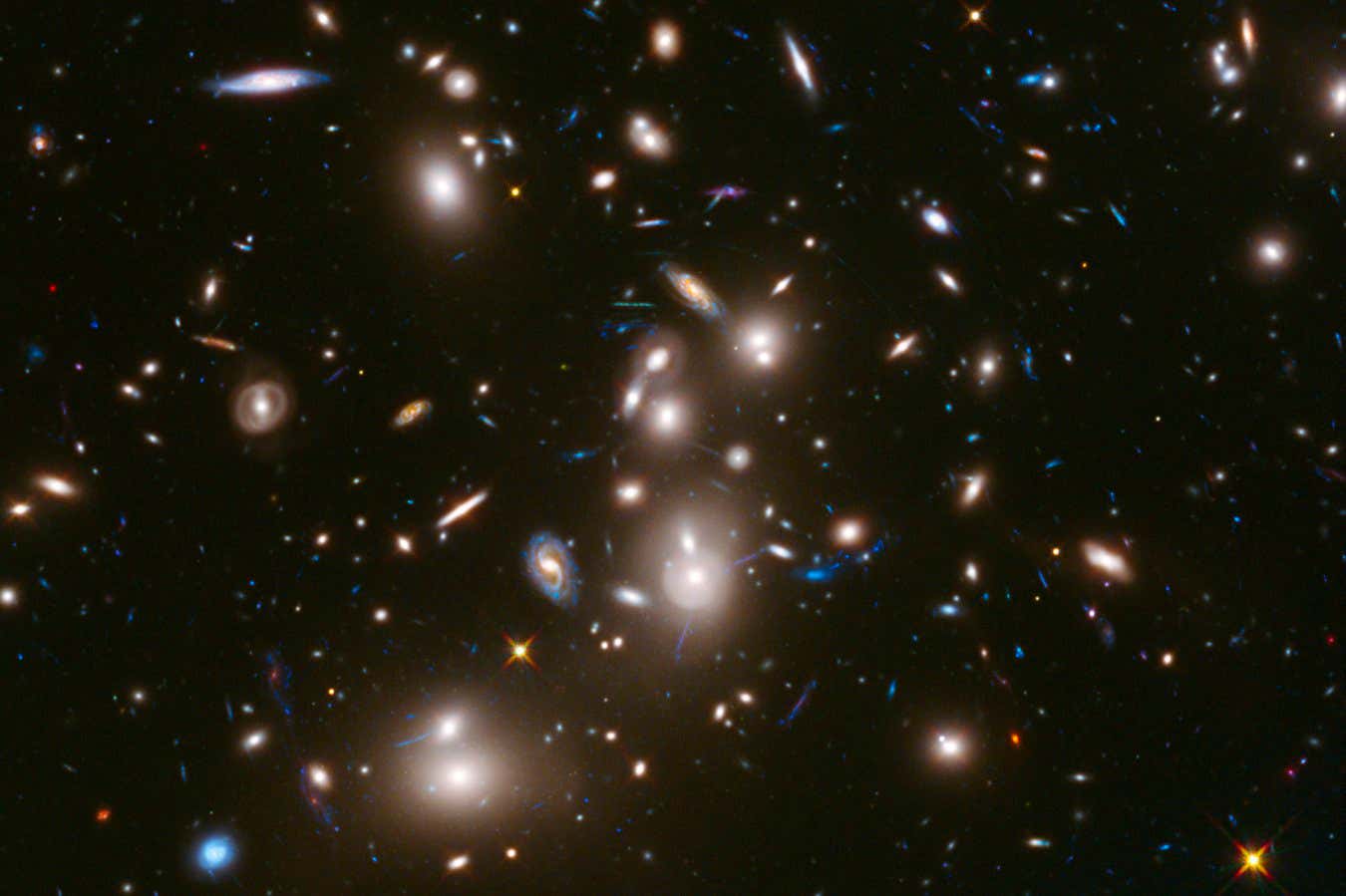Key Takeaways
- A previously unseen galaxy, AMORE6, exhibits signs of primordial stars, suggesting they formed later than expected.
- The galaxy, found in the Abell 2744 cluster, has almost no heavier elements, hinting at its pristine nature.
- This discovery could enhance our understanding of “direct collapse” black holes formed from pure gas clouds.
Unexpected Findings in AMORE6
A recently discovered galaxy, AMORE6, offers astronomers a rare glimpse into the early universe, seemingly populated by primordial stars. These population III stars are significant as they are believed to be among the first stellar objects formed shortly after the Big Bang, primarily consisting of hydrogen and lacking heavier elements produced during stellar explosions.
Despite advancements in telescope technology, particularly the James Webb Space Telescope (JWST), locating direct evidence of these first stars has proven challenging. Previous observations suggested that galaxies began to contain heavier elements just a few hundred million years after the Big Bang, complicating efforts to identify population III stars.
However, Takahiro Morishita and his team at the California Institute of Technology have identified AMORE6 in the galaxy cluster Abell 2744. Through detailed measurements of its light using JWST, they found that a common oxygen ion was absent, suggesting that AMORE6 contains less than 0.2% of the oxygen found in our sun. This lack of heavier elements indicates that the galaxy remains remarkably untainted by the elements produced from dying stars.
The unusual timing of AMORE6’s formation, approximately a billion years post-Big Bang, poses interesting questions. As the universe ages, pristine galaxies of this nature become increasingly rare. Observations reveal that AMORE6 is relatively isolated, and Morishita posits that this isolation may have delayed its star formation due to insufficient available gas in its vicinity. This phenomenon could describe AMORE6 as a “late bloomer” among galaxies.
Fabio Pacucci from the Harvard-Smithsonian Center for Astrophysics commented on the significance of these findings, noting that such pristine environments are not typically expected so late in universal development. The implications extend beyond the study of early stars; pristine galaxies may also play a crucial role in the formation of “direct collapse” black holes, which originate from massive clouds of pure gas rather than the collapses of individual stars. Traditionally, the existence of such black holes was thought to be limited to the immediate post-Big Bang era, around 100 million years after. However, the prolonged survival of pristine gas may open new possibilities for observing their formation.
This discovery of AMORE6 not only enhances the understanding of the timeline and conditions of early stellar formation but also emphasizes the potential for future astronomical observations of unique cosmic phenomena. As research continues, the insights gained may significantly influence the fields of astrophysics and cosmology.
The content above is a summary. For more details, see the source article.















